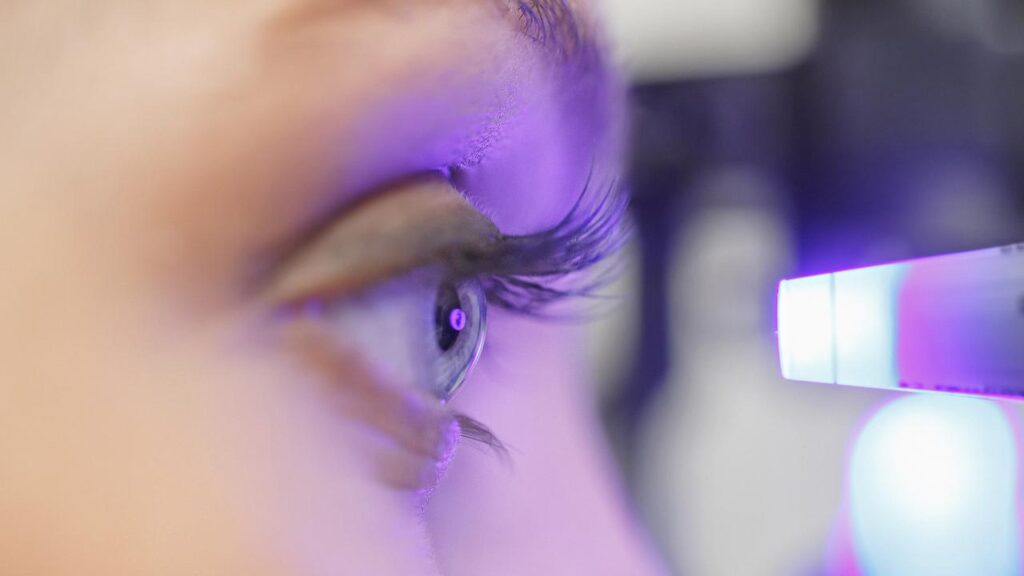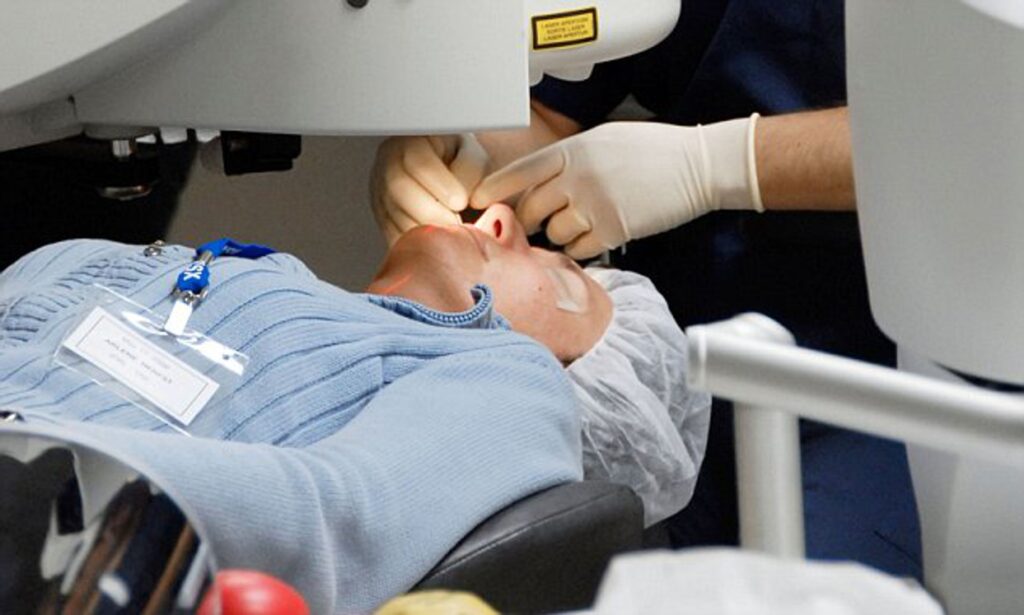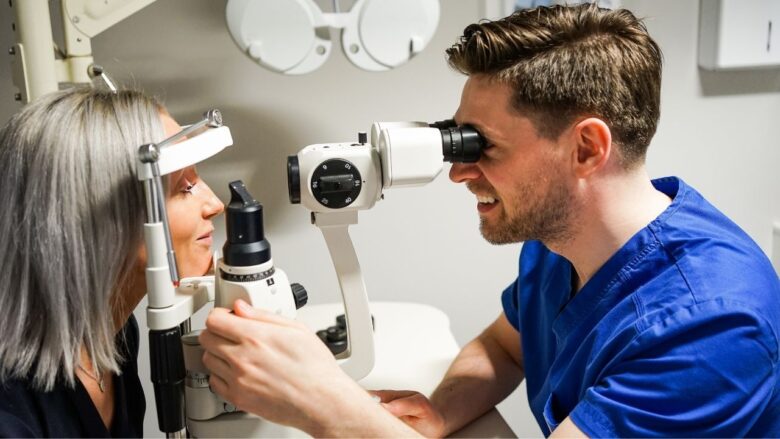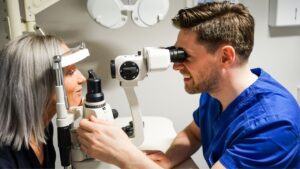In this article, we will discuss the potential side effects of cataract surgery. However, you should not let the possibility of complications during cataract surgery prevent you from having it done. Basically, this article is just to help you understand what you’re getting into. We don’t wish to diminish the positive effects of this optical procedure on eye and visual health. Aging or damage to the tissue surrounding the lens of the eye usually causes this disorder.
Cataracts are a debilitating eye illness, but they can be triggered by a variety of other factors, such as long-term steroid usage, medical illnesses like diabetes, and even genetic abnormalities all fit within this category. Click here to get more about risks involve in cataract surgery.
Cataracts in one eye, or both, can severely impair vision. There can be a wide variety of problems, as detailed by most clinics. Vision problems might include clouding or blurring, loss of vision altogether, problems seeing at night, and sensitivity to light and glare.
Summary of the Operation
Cataract surgery, in a nutshell, involves a surgeon emulsifying and suctioning away fragments of the eye natural lens. Because of this, the surgeon can replace the natural lens with an artificial intraocular lens.

Innovations in cataract surgery technology
Cataract surgery among other medical procedures have also benefited from technological advancements. The number of businesses providing specialised lens implants, often in tandem with the refractive corneal surgery, is growing rapidly. According to research, newer, more effective methods can reduce patients’ need for corrective lenses of all kinds, including glasses, readers, and contacts. As a result, the benefits of cataract surgery is ultimately for an improvement to one’s quality of life.
Surgery for Cataracts Result in Certain Inherent Dangers.
Cataract surgery can improve your quality of life, but only if you’re prepared for the potential downsides. Compensation for any mistakes made during eye surgery is fundamental to who we are. . Therefore, we also like to make you aware of the potential risks associated with botched cataract surgery. Contact your eye doctor immediately if you have any of these symptoms.
Detachment of the retina
Detachment of the retina does not just occur after cataract removal. Affected people might include those with myopia or diabetes. Without a healthy retina, good eyesight is extremely unlikely. Retinal detachment manifests itself clinically through a number of symptoms, including: a heaviness in the eye, a distortion of straight lines, the appearance of shadows on the periphery of vision, and brief flashes of light triggered by eye movement.
Retinal detachment is considered a medical emergency and requires immediate treatment, according to professionals. If the retina were to completely separate, vision restoration would be impossible.
Laser surgery, cryotherapy, and pneumatic retinopexy are all viable methods for treating retinal detachments, with the latter two reserved for less severe instances.
Posterior Capsule Opacification (PCO)
This kind of primary visual impairment is the most prevalent complication following a cataract surgery. In this case, the surgery generates a capsular bag that lets light enter the eye directly along the optical axis. However, some cells can develop and eventually infiltrate the surface of the intraocular lens. When they break apart, light scatters and visibility suffers.
Therefore, if PCO occurs, laser surgery as an outpatient is required to resolve visual disturbances.
Endophthalmitis
Endophthalmitis is a bacterial infection of the eye that can develop after cataract surgery. Even though it’s not as frequent as PCO, it demands to be treated more quickly. This is due to the serious consequences for eye health and vision that is in question.
Staph or strep are also names for these microorganisms that could cause this infection. It takes about a week for endophthalmitis symptoms to show following a cataract surgery. To name just a few examples: blurred vision, red or swollen eyelids, pain, and discharge (usually green or yellow) are the common symptoms of Endophthalmitis.
Antibiotic injections (and even further surgery in extreme situations) are standard methods used in the treatment of the infection. Act soon if you experience symptoms; or else an irreversible damage to your sight and the eye itself may occur, even if treatment is successful due to delay.

Eyelid that hangs down
The drooping eyelid condition known as ptosis was historically a typical aftereffect of cataract treatment. Evidence suggests that the occurrence rate following cataract surgery was as high as 13 percent.
With the advancement of science and technology, this type of event occurs less frequently nowadays. And the signs are easy to recognise as well. The most noticeable symptom is a drooping of the top eyelids, which might interfere with near- and far-sightedness.
Along with a rundown body and aching joints, you may also have severe dryness or watering of the eyes. Tilting one’s head back may be necessary for certain people in order to carry on a conversation normally and observe what’s going on around them.
As a precaution, you should be aware of these five major hazards associated with cataract surgery.
Loss of Sight Vision
Despite all the possibilities identified the use of surgery for cataract treatment, there are some potential risk of the loss of vison that may result from the harm caused by a botched cataract operation. Although, some of them may take a long time to manifest. Retinal detachments, which can cause vision loss years after cataract surgery, are uncommon among people but are not unheard of.
If you’ve been noticing random flashes in your eyes or floating particles, you should take action immediately by seeing an ophthalmologist.
Other potential dangers
YAG laser capsulotomy is only one of several potential dangers. Cataract surgery often necessitates this treatment to correct any remaining visual issues after the cataract has been removed.
Also, there’s the problem of macular degeneration in the elderly. Whether or not cataract surgery can help age-related macular degeneration (ARMD) is typically situational. Seeing an eye doctor is recommended by some, since it may improve one’s quality of life in terms of sight.




